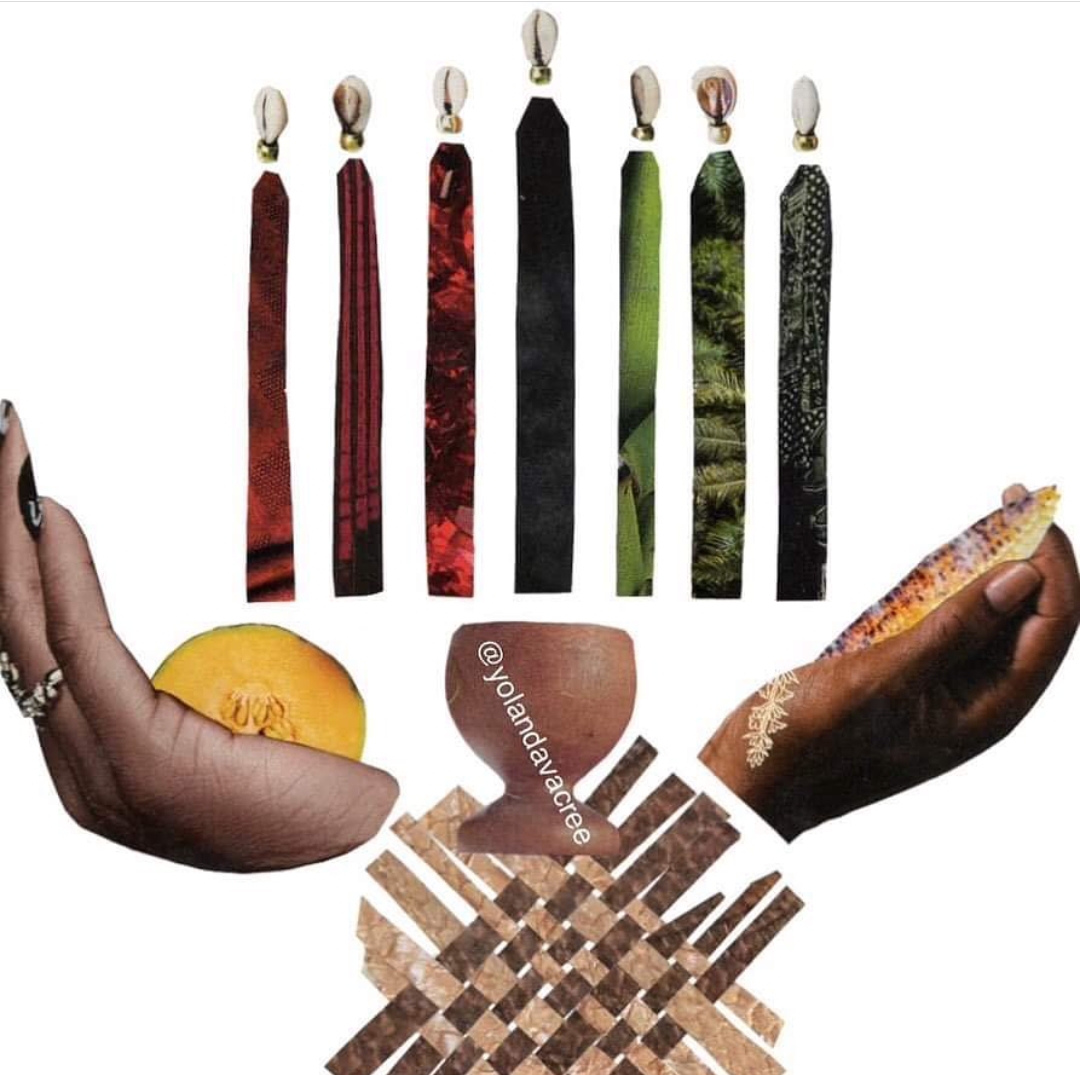Kwanzaa + Black Savannah History

Umoja (Unity)
:: to strive for and maintain unity in the family, community, nation and race
The boycotts of 1960! Two Beach High School students were arrested during a sit-in at Levy’s Department Store on Broughton Street. W.W. Law called for a boycott: No shopping on Broughton Street, period, until they started letting us shop, work, and eat there (and stop calling us boy or girl instead of sir or ma’am).
The NAACP arranged for older black folk who owned property to bail out the young folk who were arrested during protests. This fueled the movement. It worked too. Five white-owned stores chose bankruptcy over integration. Not long after, Savannah desegregated its stores and restaurants–8 months before the Civil Rights Act passed which forced white businesses to integrate.
Florie Scriven, who did a number of marches and sit-ins in Savannah, said it best: “We stuck together.”
Kujichagulia (Self-Determination)
:: to define ourselves, name ourselves, create for ourselves, and speak for ourselves
The Gullah Geechee Cultural Heritage Corridor. It was created “to preserve, share and interpret the history, traditional cultural practices, heritage sites, and natural resources associated with Gullah Geechee people of coastal North Carolina, South Carolina, Georgia and Florida.”
Queen Quet captains the ship and does a wonderful job of telling the world who we be, what we brought/bring to the table, and what we need in exchange for it. “We Speak Fuh We.” And we betta, ’cause ain’t nobody else gon’ do right by our story.
Ujima (Collective Work and Responsibility)
:: to build and maintain our community together and make our brother’s and sister’s problems our problems and to solve them together
Migrations are always happening, for all kinds of reasons. One of the most well-known movements was the Great Migration when black folk were leaving the south and moving up North and out West. That wasn’t the only one though. We were also leaving small rural areas (the country) and moving to the city. Mr. Johnny Parrish and his wife moving from Swainsboro to Savannah is an example of this.
The ONLY reason it worked out is because we could depend on family and community to help us get on our feet once we moved. Most the time, like Ms. Mary Butler Smith said, “they wouldn’t charge you a dime.”
Ujamaa (Cooperative Economics)
:: to build and maintain our own stores, shops and other businesses and to profit from them together
Dr. Ralph Mark Gilbert (who the civil rights museum is named after) put together a directory of black-owned businesses in 1952. It was actually the last thing he worked on before he passed in 1956. We had all kindsa businesses: hair salons, barber shops, restaurants, tire shops, night clubs, daycares, gas stations, medical offices, a library, etc.
That directory and those businesses were the best examples of Ujamaa in Savannah blackintheday.
Nia (Purpose)
:: to make our collective vocation the building and developing of our community in order to restore our people to their traditional greatness
Sol C. Johnson and the Savannah Tribune. That man did some magical things with that newspaper. He really used it to build up Black Savannah. While leaders like Marcus Garvey tried to convince black folk to move to Africa or up north and outta the south, Johnson disagreed: Don’t let them people run you from your home; we built this.
Kuumba (Creativity)
:: to do always as much as we can, in the way we can, in order to leave our community more beautiful and beneficial than we inherited it
Shoutout to King James Kimble (I added the King, because…yeah) who built the Black Holocause Memorial over there over Anderson and East Broad. And when someone destroyed it, he built it right back. And shoutout to Jerome Meadows and his Indigo Sky Community Art Gallery. He over dey using found objects–stuff we’d call trash–to build masterpieces. Virginia Jackson Khia who didn’t let not having a “museum” stop her dreams; she turned her house into one over at 505 W. 36th Street.
And special shout out to Dr. Jamal Toure who put a 2.0 at the end of this Kwanzaa thang in Savannah. Know how folk do bar crawls? Well, he was part of a crew that created the Kwanzaa Crawl to bring more attention and dollars to black-owned businesses in the city. Don’t just tell the people what Kwanzaa is. Show ’em. I love that.
Imani (Faith)
:: to believe with all our heart in our people, our parents, our teachers, our leaders and the righteousness and victory of our struggle
Problems are like puzzles. That goes for problems in the family and in the community too. We all play a part. We all hold a puzzle piece. Krak Teet is me trying to do my part by reminding you that history ain’t just the big names and big events; it’s the ordinary, it’s in the day-to-day; in the stuff you do in the name of righteousness, whether it’s recognized or not (and sometimes even if it ain’t legal yet).
And because the foundation of faith is gratitude, reach out to someone out here doing the best they can. Tell ’em thank you. Choose someone living to thank and choose an ancestor to thank in spirit. Someone who the news overlooked but who’s doing/did some good for the family or for the community. A parent. A teacher. A student. A leader. A mirror reflection even.
P.S.: That fiya Kwanzaa art is by Yolanda V. Acree, and it’s currently on exhibit at FACES in Denton, Maryland.
If you like this post, you’ll love the book. Get yours. If you wanna Cashapp a dolla or two for all the love + time put into the research and writing, I thank you in advance: $TrelaniMichelle

